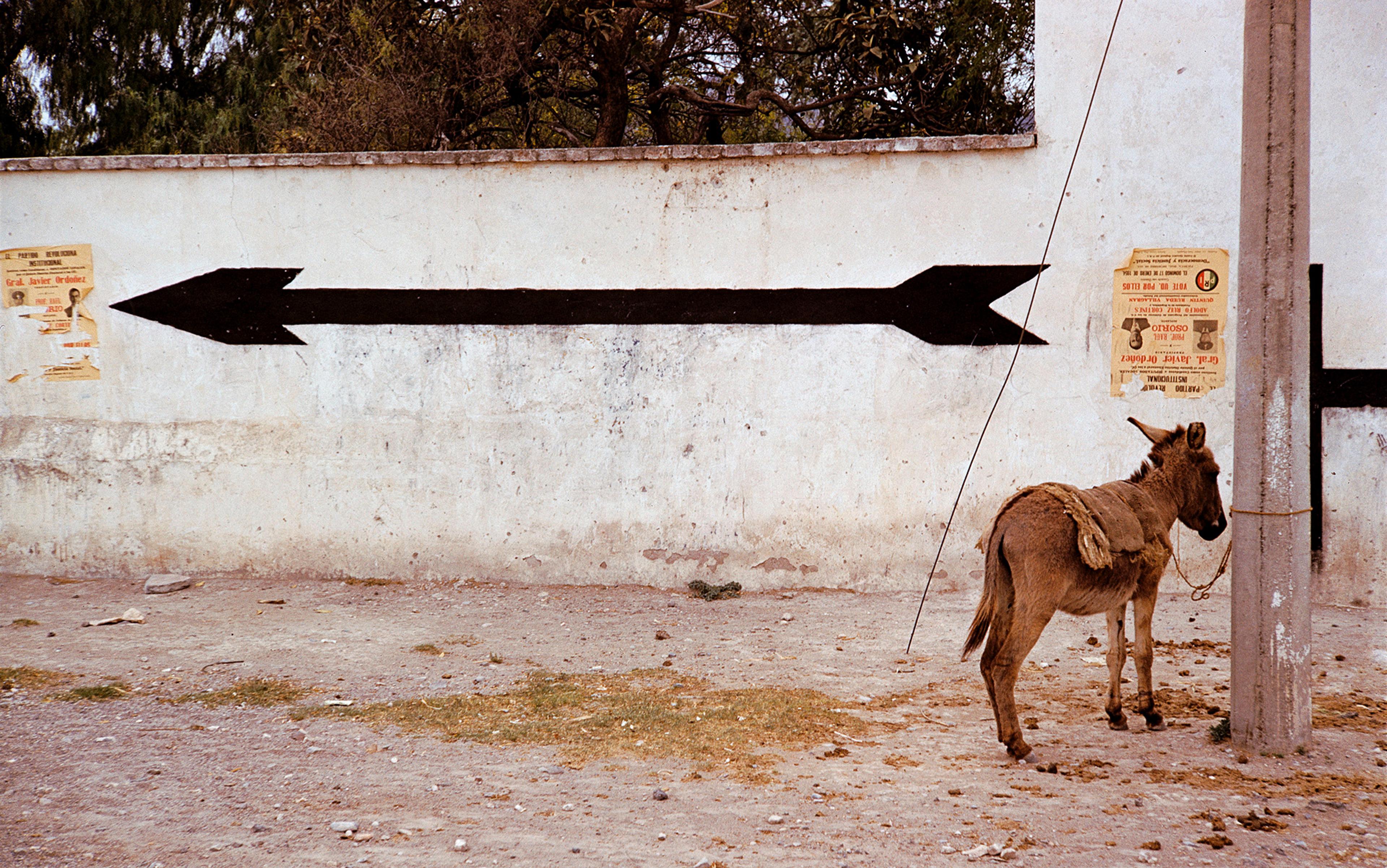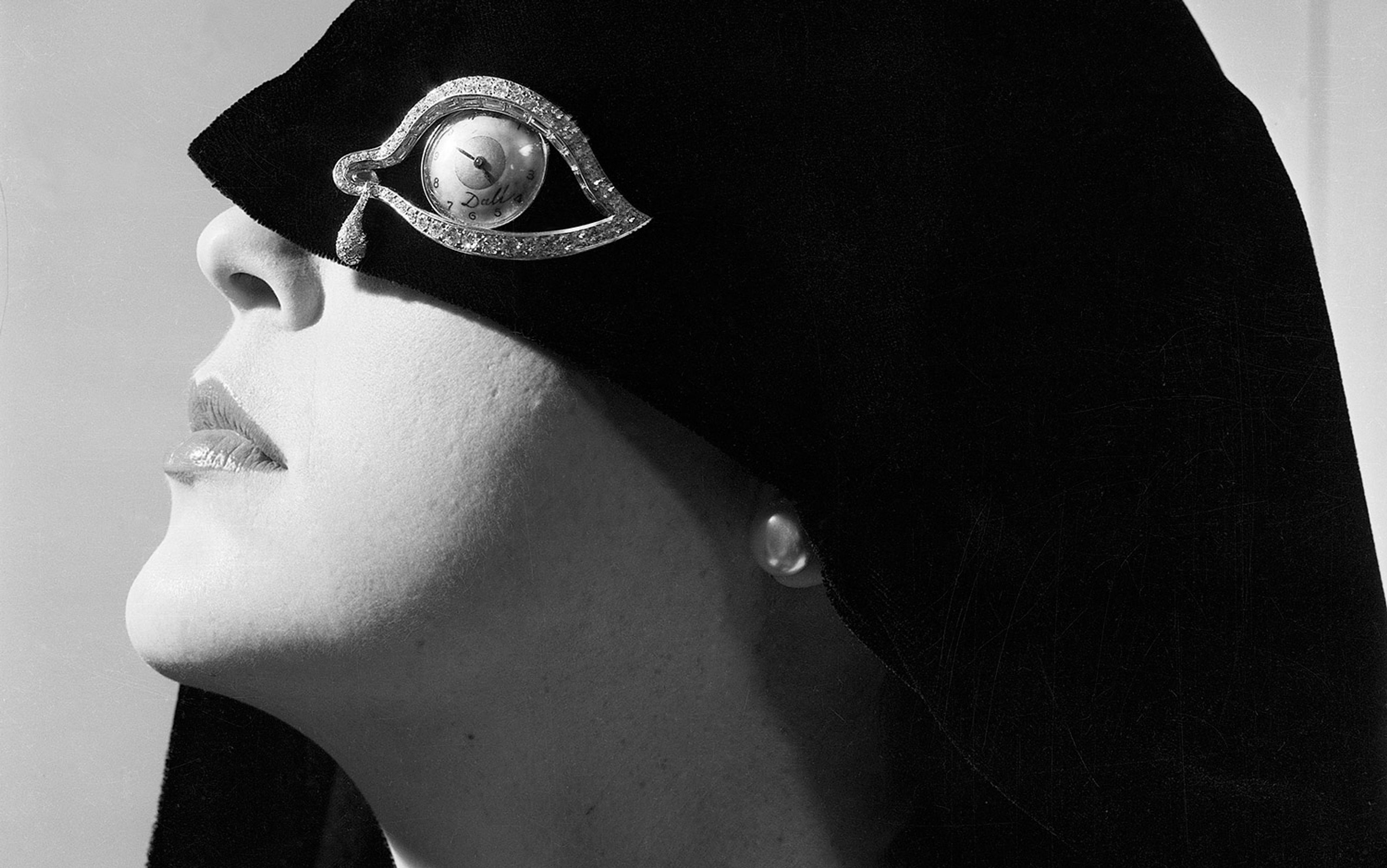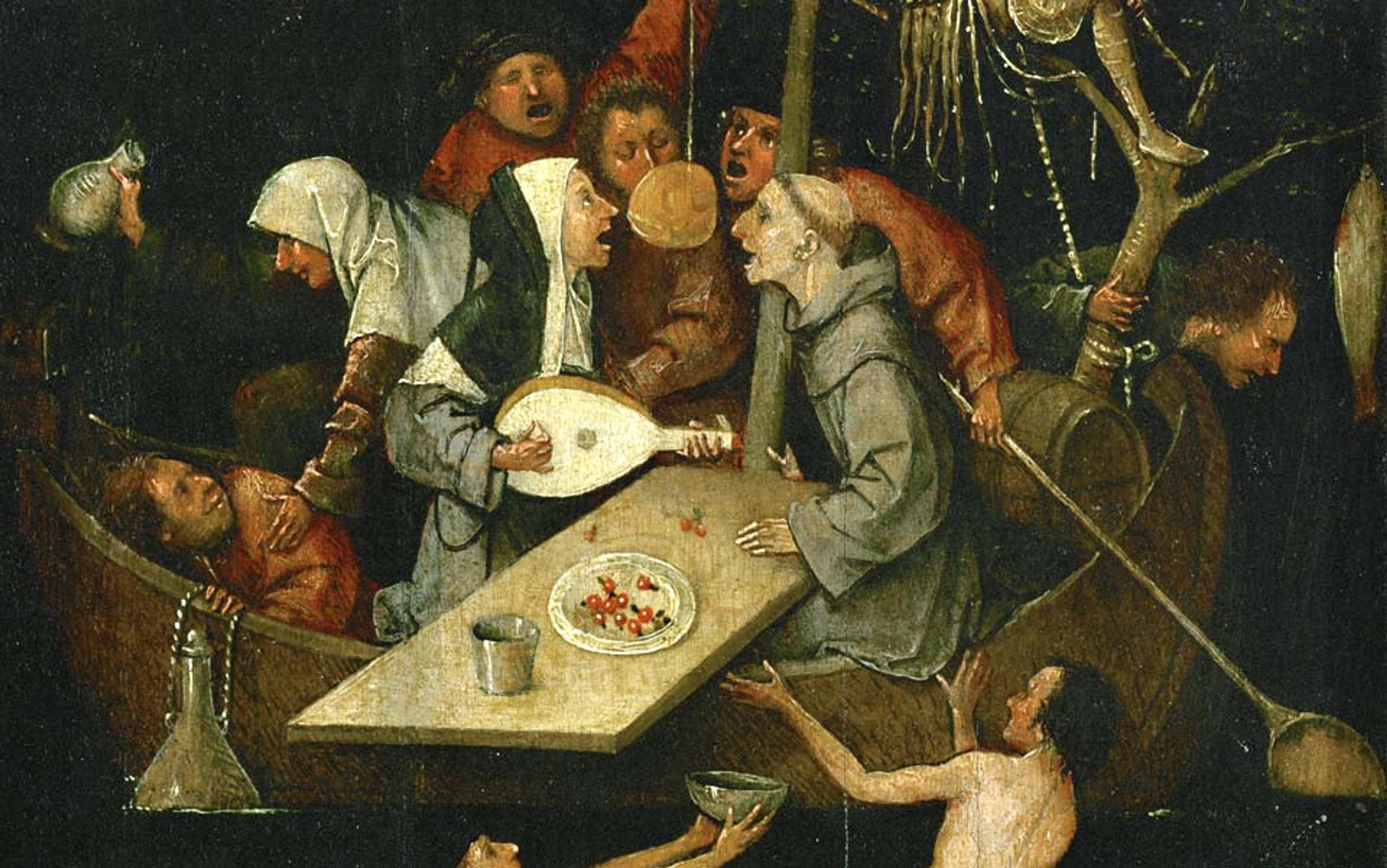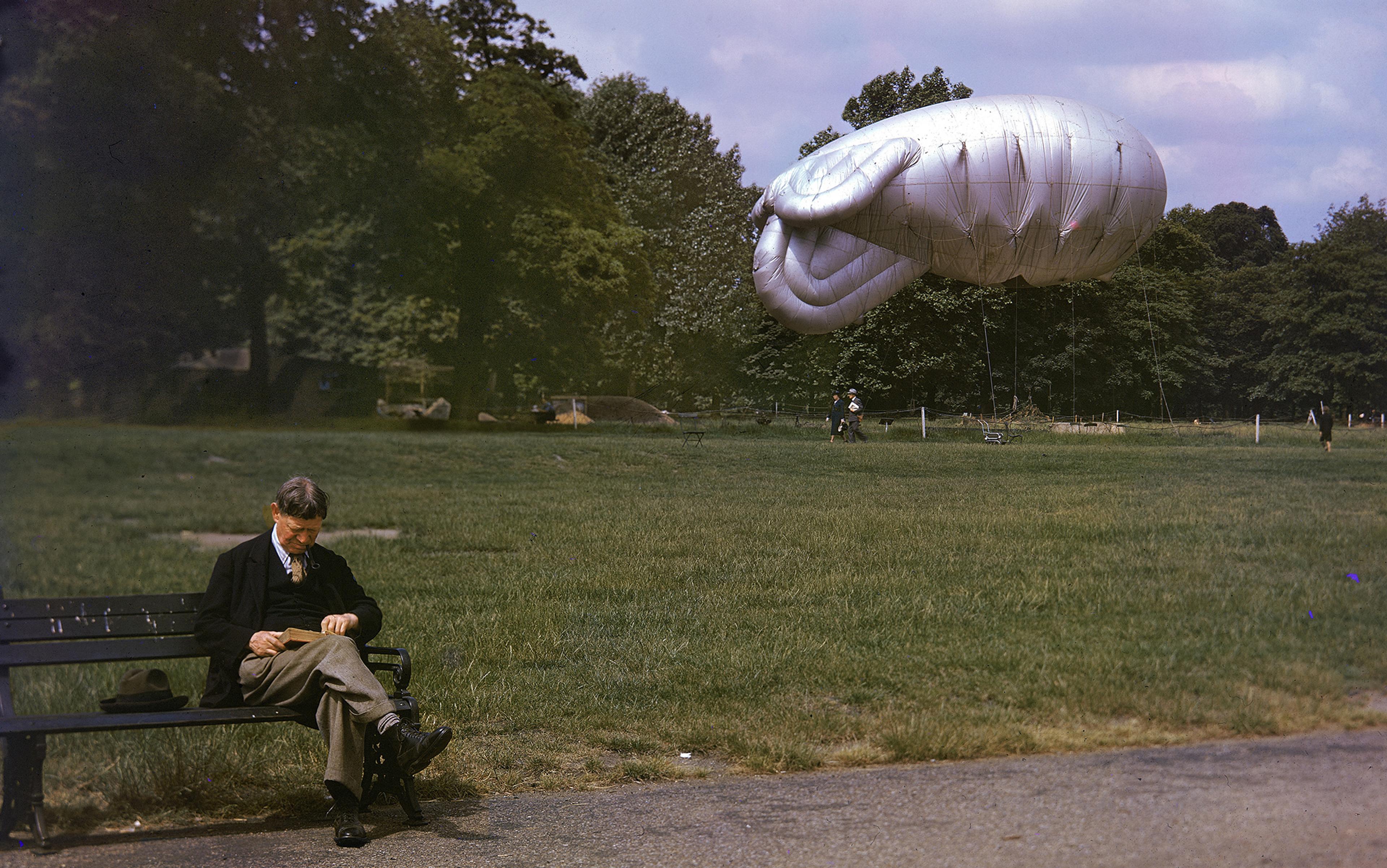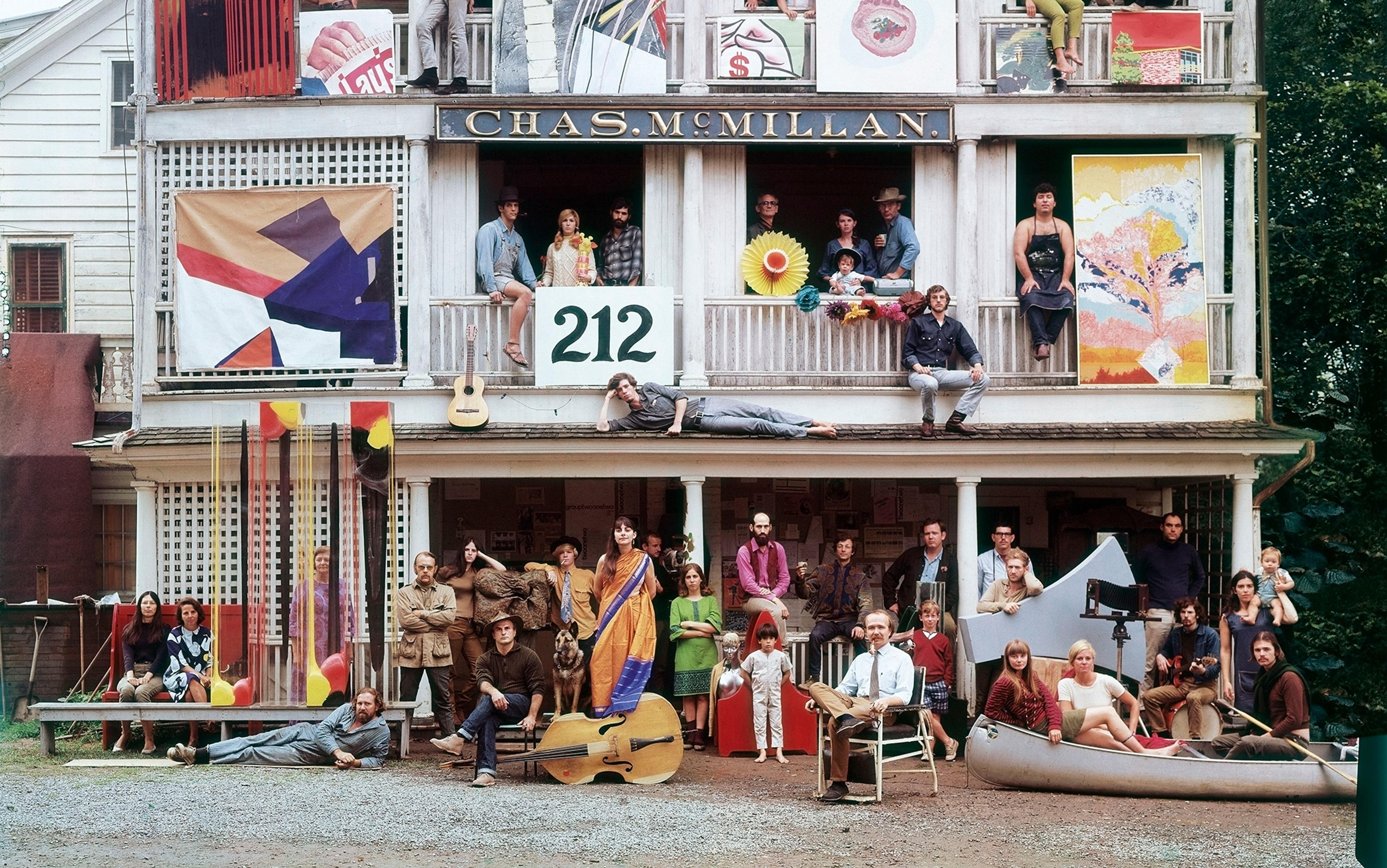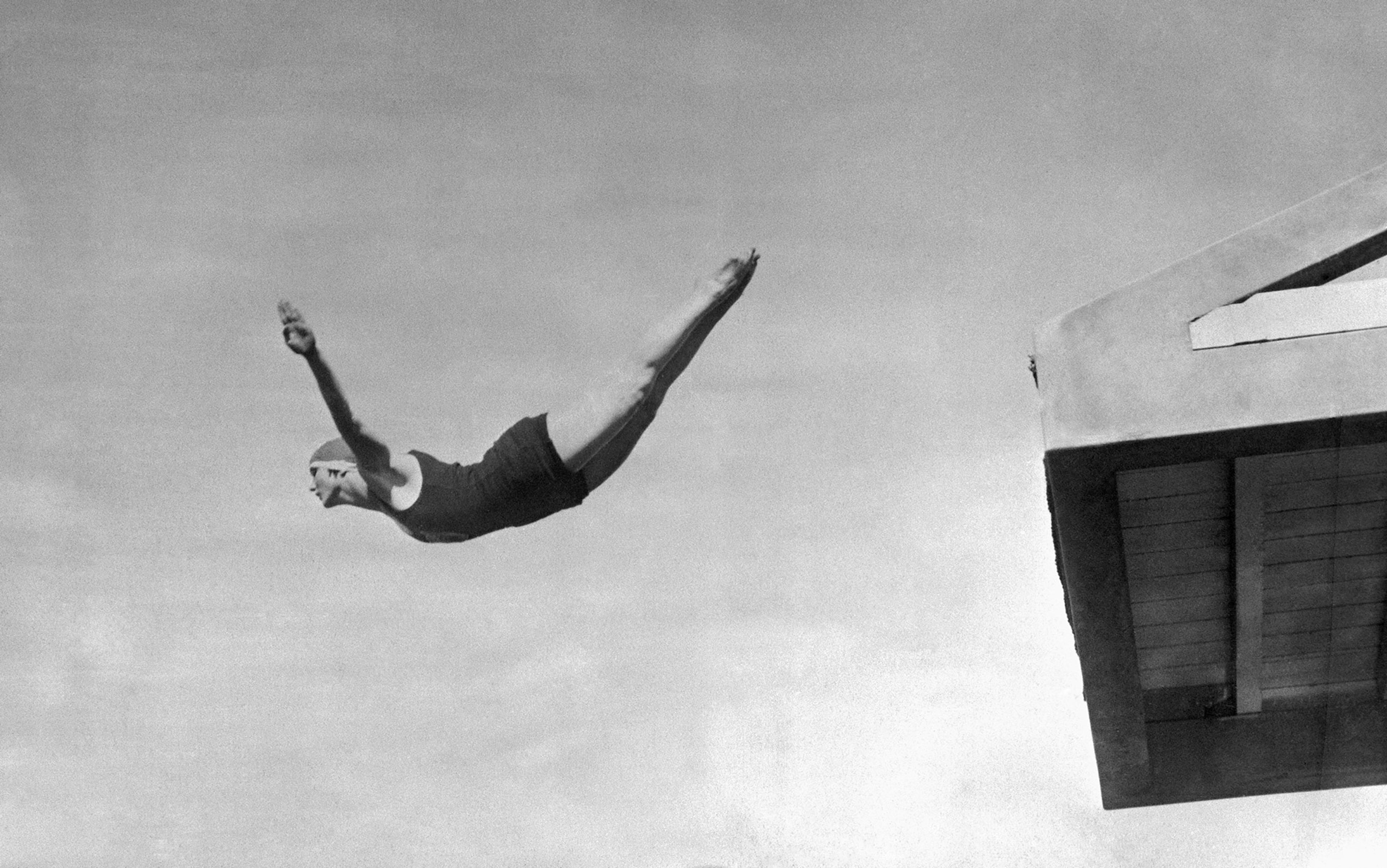At the very end of the 19th century, Hugo Münsterberg, a psychologist at Harvard University, warned the American public not to expect too much from his laboratory colleagues in the way of life lessons. The message fell on deaf ears. From lessons in personality types to new strategies for effective thinking, the promise implicit in the coming deluge of popular psychology – or ‘yellow psychology’, as its early critics preferred – was a secular version of what the Greeks called metanoia: a change of mind, a new way of looking at oneself and the world.
The market in popular psychology in postwar Britain was led by Penguin books, whose blue-spined Pelican imprint brought the insights of Sigmund Freud, Donald Winnicott, B F Skinner, R D Laing and a roll call of clinical and laboratory experts to a mass readership. Among the purveyors of new psychological knowledge, there was, however, one ‘expert’ who stands conspicuously apart: Edward de Bono, a Maltese physician and medical researcher who turned his back on academia to become a student of creativity.
Eschewing experiment, ignoring all existing studies and scholarship, de Bono’s reputation as a thinker and proponent of lateral thinking is founded on nifty puzzles, a storehouse of anecdotes, an abundance of imperial generalities, no end of clunking analogies and neologisms, and a toolkit that was by no means as novel as his publishers or readers might have assumed. Beginning with his bestseller The Use of Lateral Thinking (1967), de Bono’s quixotic brand of psychology takes aim at traditional logic, identifying it as the enemy of insight and invention:
By far the greatest amount of scientific effort is directed towards the logical enlargement of some accepted hole … Yet great new ideas and great scientific advances have often come about through people ignoring the hole … This hole-hopping is rare because the process of education … is designed to make people appreciate the holes that have been dug by them … Many great discoverers like Faraday had no formal education at all, and others like Darwin or Clerk Maxwell had insufficient to curb their originality.
To demonstrate the limitations of orthodox hole-digging, de Bono proposed this dilemma. A London merchant owes a large sum to a moneylender, and is in danger of being imprisoned for his debts. The moneylender, who has designs on the merchant’s daughter, suggests a bet. He will take two pebbles from his garden path, one black and one white, and place them in an empty money-bag. The young woman will pick out one of the pebbles. Black: she’ll become the moneylender’s wife, and the debt will be cancelled. White: she’ll stay with her father, and the debt will still be cancelled. Reluctantly, father and daughter accept the bet. However, as they stand in the moneylender’s garden, the young woman notices that the two pebbles that he picks up, placing them quickly in the money-bag, are both black. What should the young woman do? How can she think her way out of her predicament?
According to de Bono, logic demands that she either refuses to take a pebble, or take the black pebble and sacrifice herself. What this situation requires, he maintains, is the wide beam of lateral thinking, which will shift attention from the pebble that is selected to the one left behind. Through lateral thinking, the woman will discover that she has a counter-ruse at hand. Pick a pebble from the bag, fumble and drop it on the path, and while cursing her clumsiness, declare ‘Never mind – if you look into the bag, you will be able to tell which pebble I took.’
The Use of Lateral Thinking is a short book with a long reach. Providing no more than a few slight examples of how lateral thinking might work in practice – largely on the perception of shape and function in geometric forms – it proposed four vague principles for problem-solving and creativity: the recognition of dominant polarising ideas; the search for different ways of looking at things; a relaxation of the rigid control of vertical thinking; and the use of chance.
Lateral thinking was not, de Bono conceded, ‘a magic formula’ to be learned and used at will. ‘No textbook could be compiled to teach lateral thinking,’ declared the future author of Lateral Thinking: A Textbook of Creativity (1970), as well as The Five-Day Course in Thinking (1968), Practical Thinking (1971) and Teach Yourself to Think (1995). For now, the would-be lateral thinker would have to make do with a few suggestive leads. Try using visual images as your ‘material of thought’. Think by analogy. Adopt a random position. Unthinkingly select an object to stimulate association.
For readers who were wondering what science lateral thinking was based upon, de Bono’s book The Mechanism of Mind (1969) left the matter unresolved. Nerve networks in the brain, he declared – omitting to mention any neurological research or cognitive studies – permitted information to organise itself into sequences or patterns that were usually asymmetric, like rain channelled into streams and rivers. As efficient as this self-organising system was at setting up patterns, the asymmetry caused thinkers to proceed only along the main channels:
The purpose of the brain is to establish and use routine patterns. That is why creativity is not a natural process in the brain. In fact, it goes against the natural process of following patterns.
This was, at best, a very elementary guide to the psychology of schemata – its main insights doused in water analogies rather than the language of mental software.
Lateral thinking left academics from all disciplines nonplussed. For philosophers, formal logic didn’t equate to the actual processes in which a thinker is engaged when reasoning: it was a means of testing the validity of conclusions already reached. Historians of science questioned why de Bono invested so much in the genius ‘eureka’ moment, when invention and paradigm shifts were more commonly the work of communal endeavour and disputation. Intellectual historians wondered how Greek philosophy had stymied lateral thinking (the alphabet and literacy had, surely, played an altogether more vital role in the cognitive retooling of the modern mind), and reminded de Bono that the Ancient Greeks had many ‘irrational’ byways for pursuing insight and inspiration.
Psychologists had more questions than most. Lateral thinking clearly overplayed the importance of the creative breakthrough at the expense of trial and error, feedback and reflection, not to mention unconscious incubation. Moreover, evidence from Gestalt and cognitive psychology, pointed to multiple types of insight and intuition: problems that required a quick solution, such as the pebble dilemma, deployed a variety of mental shortcuts or heuristics, dependent on context and motivation.
Though de Bono’s attack on Western logic and traditional pedagogy chimed with the countercultural zeitgeist, lateral thinking was destined to find its most starry-eyed acolytes in a world that the New Age had quietly passed by: business management, where de Bono soon acquired a reputation as a consultant and lecturer. Doing the rounds of Shell, IBM and DuPont, he seized his moment, unleashing a stream of books and courses that were as notable for their unabashed upselling as their signature bombast and newly minted terms. ‘Operacy’: the skill of thinking leading to action. ‘Fractionation’: taking an existing idea and breaking it into parts to be rearranged to spark new ones. ‘Random-input method’: selecting a random word or object and applying it to the problem at hand. ‘PO’: a provocation used to move thinking forward. The neologisms kept on coming, lending a shiny gloss to every new iteration of lateral thinking.
From the boardrooms of Fortune 500 companies to schools and government ministries, few concepts in popular psychology travelled as far and wide as lateral thinking. Garnering in excess of 20 million readers across almost 40 countries, a BBC TV series, hundreds of paid-up and certified ‘Master Thinkers’, a network of educational and business champions, de Bono had, by the 1980s, become a peculiar type of public intellectual: one who refused to engage with critics and detractors. Criticism was, according to the father of lateral thinking and founder of the Cognitive Research Trust, a vestige of the adversarial and ‘intrinsically fascist’ Socratic method. ‘The vertical thinker is more interested in seeing on what basis he can pull things apart,’ he maintained, ‘the lateral thinker is more interested in seeing on what basis he can put things together.’
The lateral thinking movement was equally silent when it came to questions about the provenance of its theory and methods. In every one of his books, de Bono approached the field of creativity and problem-solving as a virtual scientific terra incognita: no philosopher or serious thinker had apparently thought to consider the mental processes, conscious or unconscious, that were the wellspring of left-field thinking and heterodox ideas; no experimental work had been undertaken on cold cognition, bounded rationality and the heuristic shortcuts that decision-making relies on. In the same way that Freud had feigned ignorance of Arthur Schopenhauer and Friedrich Nietzsche, fostering the impression that he was the true ‘conquistador’ of the unconscious, de Bono places himself in a class of one. An outsider scientist in search of a ‘more creative way of using the mind’, the only meta thinker to have escaped the 2,000-year stranglehold of Greek philosophy, de Bono could find no shoulders to stand on.
Behind this pioneer fiction there was, of course, a long history of research into creativity, a rich treasury of thought and experiment that had almost certainly provided lateral thinking with most of its magpie principles and pre-owned methods. In his lecture ‘Great Men and their Environment’ (1880), William James observed that the ‘highest order of minds’ had a knack for straying from the ‘beaten track of habitual suggestion’, and entering into a state of mind characterised by
the most abrupt cross-cuts and transitions from one idea to another, the most rarefied abstractions and discriminations, the most unheard-of combinations of elements, the subtlest associations of analogy; in a word, we seem suddenly introduced into a seething caldron of ideas, where everything is fizzing and bobbing about in a state of bewildering activity, where partnerships can be joined or loosened in an instant, treadmill routine is unknown, and the unexpected seems the only law.
Known to some Enlightenment philosophes as ‘negative imagination’, this mercurially creative sensibility remained in the shadow of pathology and degeneration for much of the 19th century, and it fell to a new wave of French psychologists to push for its study and rehabilitation. In 1900, Théodule-Armand Ribot proposed that all forms of the ‘constructive imagination’, including the mystic and the utopian, were grounded in our ‘needs, appetites, tendencies and desires’. His contemporary Henri Bergson went further, positing an élan vital, a creative impulse as the motor of evolution itself.
Meanwhile, the mathematician and polymath Henri Poincaré dug deep into the ‘sudden illuminations’ that punctuated his research. The unbidden insights that had propelled him to make discoveries across various fields were, Poincaré insisted, evidence of complex work being undertaken subliminally, over days and weeks, as he busied himself with unrelated issues. For Poincaré, the role of the unconscious in the creative process was far more significant than psychologists realised: ‘it is not purely automatic; it is capable of discernment; it has tact, delicacy; it knows how to choose, to divine.’
Insight and breakthrough needed the irruption of ‘productive thinking’, the ability to look at a situation or problem from a new perspective
It was the Gestalt school of psychology that took research into creativity and problem-solving from armchair to laboratory. Building on Wolfgang Köhler’s groundbreaking experimental work on food-gathering problems with apes, psychologists such as Max Wertheimer and Karl Duncker – US-based exiles from Nazi Germany – homed in on the mental blocks that typically impeded the solution to thought problems. In other words, insight was studied by way of blindness.
The so-called Einstellung effect (from the German for ‘attitude’ or ‘setting’) – discovered by Wertheimers’s Brooklyn-born collaborator Abraham Luchins – was one of the Gestalt school’s best-studied phenomena. In his paper ‘Mechanization in Problem Solving’ (1942), Luchins reported on an experiment in which volunteers were asked to do simple arithmetic by visualising water jugs of varying capacity. Luchins found that all his volunteers made fairly easy work of the problem when primed in a simple three-step solution. Yet having employed the method successfully on repeated tasks, he then presented them with an altogether simpler problem, and this is when things got interesting. When given a water task that required only two steps, a significant number came unstuck, suggesting that the task was impossible. Further studies by experimental psychologists have confirmed the same effect: the familiar features of a problem seem to obscure the best solution.
The Einstellung effect, sometimes known as entrenchment or the mental-set effect, was the close cousin to another form of mental block identified by Duncker’s candle experiment. His volunteers were presented with a candle, a stack of matches and a box of thumbtacks, and asked to figure out a way of mounting the candle to the wall so that the wax would not drip on the floor when lit. The solution to the task – to take the tacks out and use them to fix the box onto the wall – eluded many subjects due to what Duncker termed ‘functional fixedness’, the tendency for an object’s established purpose to obscure makeshift applications. When subjects were presented with the empty tack box with tacks to its side, Duncker found they were twice as likely to arrive at the mounted solution.
Anticipating de Bono’s assertion that it ‘may be more useful to study stupidity in order to understand intelligence’, Gestalt psychology also identified the very notion of lateral thinking in all but name. In Productive Thinking (1945), Wertheimer noted that logical-analytical thinking, or reproductive thinking, was hostage to repetition, habit and intellectual precedent. Insight and breakthrough, in science and everyday life, needed the irruption of ‘productive thinking’, the ability to look at a situation or problem from a new perspective. For example, in his own research with young schoolchildren asked to calculate the area of a parallelogram, Wertheimer observed one young girl excitedly ask for a pair of scissors. She then cut off a triangle from one end, and moved it around to the other side, turning the parallelogram into a rectangle. This was productive thinking at work. Intractable problems invariably required a change of vision.
While the Gestaltists had mapped the territory on which lateral thinking set out its proprietary wares, the concept of productive thinking was not its only mid-century analogue. In 1950, the psychologist J P Guilford, a pioneer in the field of psychometric testing, used his presidential address to the American Psychological Association to inform colleagues of a cohort of creative subjects that had demonstrated what he soon called ‘divergent thinking’. Unrelated to any current measure of intelligence, divergent thinking had, Guilford suggested, four principal characteristics: the ability to produce a great number of ideas or problem solutions in a short period of time; to simultaneously propose a variety of approaches to a specific problem; to produce original ideas; and to organise the details of an idea in one’s head and carry it out.
Creativity research in the US had by this time shifted its attention from the individual to the group. How could commercial and industrial problems be best approached collectively in the workplace? What procedures and protocols might be applied to stimulate group innovation? The central figure in this emerging field was Alex Osborn, a partner in the BBDO advertising agency (the inspiration for the TV series Mad Men) and the originator of the concept of brainstorming. A former journalist, Osborn coined the term in 1938, after leading team meetings in which problems and issues were approached ‘in commando fashion, with each stormer attacking the same objective’.
In his book Your Creative Power (1948), Osborn laid out the basic tenets of brainstorming, the most important of which was that no idea should be discouraged or judged. The objective of brainstorming, best practised in meetings of between five and 10 people, was to simply generate as many ideas or suggestions around one specific issue as possible. Osborn warned:
When you’re through, your sheet of paper may be so full of ridiculous nonsense that you’ll be disgusted. Never mind. You’re loosening up your fettered imagination – making your mind deliver.
The supplementary techniques that Osborn offered to assist in brainstorming might sound familiar. They include randomly selecting a word and applying it, however obliquely, to the problem at hand, and bringing ideas together to form novel constructions.
The list of lateral thinking’s apparent borrowings doesn’t end here. As other commentators have pointed out, de Bono’s emphasis on jokes and puns as examples of the lateral thinking process seems to have been lifted straight from the pages of Arthur Koestler’s The Act of Creation (1964). Published three years before The Use of Lateral Thinking, Koestler’s sweeping synthesis of Gestalt, cognitive psychology, ethology, literary theory and the history of science proposed that the hidden codes that automate our perceptions, judgments and behaviour could be countermanded through bisociative thinking, a hallmark of aesthetic insight, intellectual breakthrough and humour. De Bono clearly agreed: his concept of the ‘insight switchover’, the punchline moment of lateral insight, was no more than a rebranding of the act of bisociation.
The lateral thinking movement still opts to festoon itself in anecdotes, hearsay and testimonials
To be charitable to de Bono, one might suggest that his selective amnesia has been a side-effect of his working methods. Not fond of researching any subject too deeply, most of his books seem to have been dictated over a couple of days, partly from notes, allowing ideas that might have been picked up along the way to alchemically emerge under his imprimatur (his books have no references or bibliography).
This freewheeling attitude has also extended to the question of evidencing the putative effects of lateral thinking in the classroom and workplace. Rather than accumulate independent empirical evidence of its efficacy, the lateral thinking movement still opts to festoon itself in anecdotes, hearsay and testimonials. ‘Research tends to be so artificial,’ de Bono told David Gonzáles in The Art of Solving Problems (2001), parrying the question of data and measurability. ‘[Besides,] nobody has been able to prove that literature, history or mathematics classes have prepared people for society.’
In The Routledge Companion to Creativity (2008), the Maltese philosopher Sandra Dingli commends de Bono for having ‘raised awareness of the benefits to be derived from deliberate efforts for instigating creative thinking’. The criticism levelled at lateral thinking for its failure to accumulate an evidential base should not, she suggests, ‘detract in any way from the practical positive effects that are regularly reported as a result of the efficient use of de Bono’s lateral thinking tools’.
This is a generous yardstick: one that helped brainstorming to prosper to the point that, by the 1950s, it was employed in planning and research in eight out of 10 of the largest companies in the US. But when brainstorming was subject to its first empirical study, at Yale University in 1958, groups were found to work far less effectively than individuals on a series of creative puzzles. In the 60 or so independent studies that have since been conducted, the evidence has stacked up firmly against the febrile claims made by Osborn and others. Brainstorming, like lateral thinking, neglects to harness the productive spark of debate, friction and constructive conflict – elements that Koestler also came to believe he had overlooked in The Act of Creation.
Pseudosciences feed on a diet of uncorroborated facts and wild speculation, and lateral thinking lacks neither. Consider the much-touted claim that the concept of horizontal drilling for oil – first attempted in US oil fields during the Depression – came to de Bono in a meeting he chaired at the London offices of Shell in 1970. Think for a moment about his suggestion that ‘in a democracy, if your party lost the election, you should pay 10 per cent less tax than the other party’. And what of the idea that de Bono once gifted the UK Foreign Office for brokering peace in the Middle East: shipments of Marmite, to counter aggression caused by low levels of zinc in a region that favours unleavened bread. In their wilful oddity, de Bono’s lateral speculations could be adverts for G K Chesterton’s maxim ‘There are no rules of architecture for a castle in the clouds.’
Almost a century ago, the acerbic American journalist H L Mencken observed that psychology was becoming lost in a fog of its own making. ‘The one way to make a splash in psychology is to come out with a new and revolutionary theory.’ Given that the lateral thinking movement has had almost 50 years to put its evidential house in order, to test whether its mental tricks are any more effective than, say, a short nap or concentrated effort, it’s surely time to put it back in the box and file it under what Mencken would have baldly called flim-flam.
